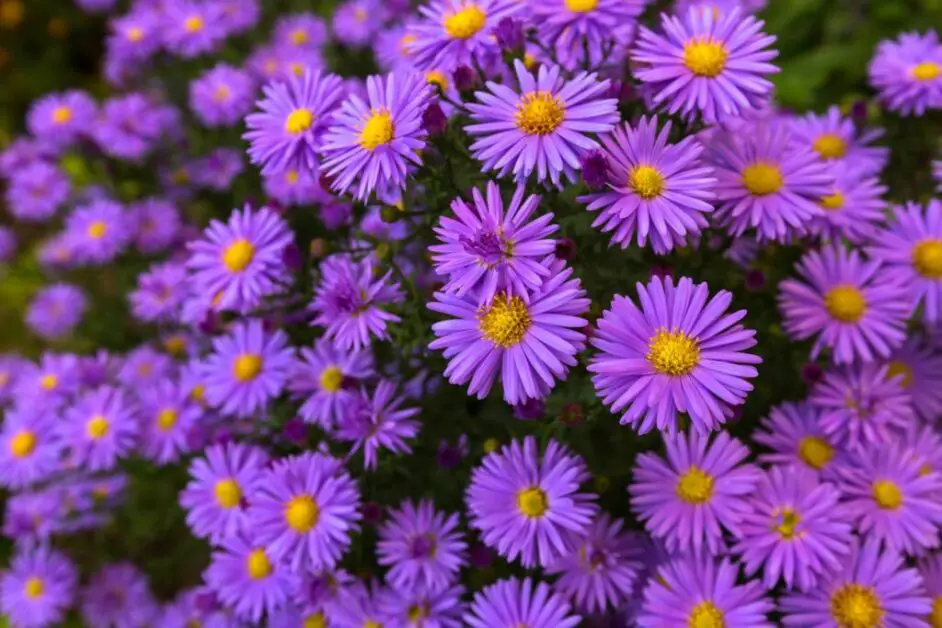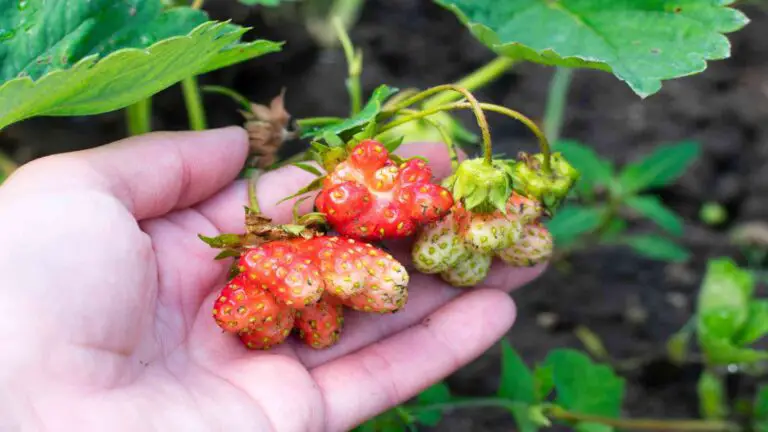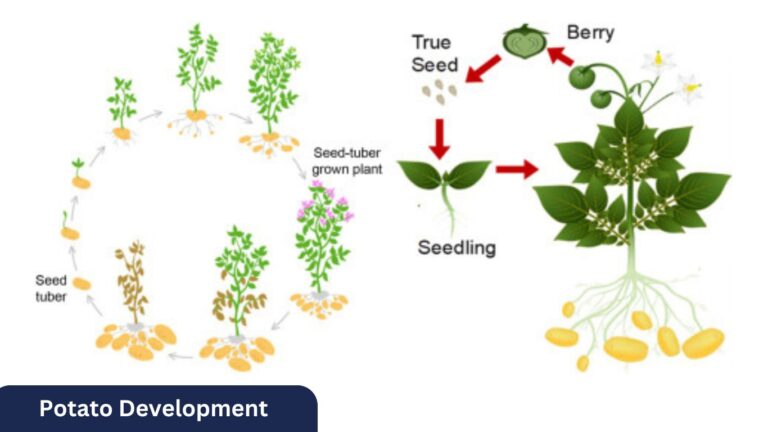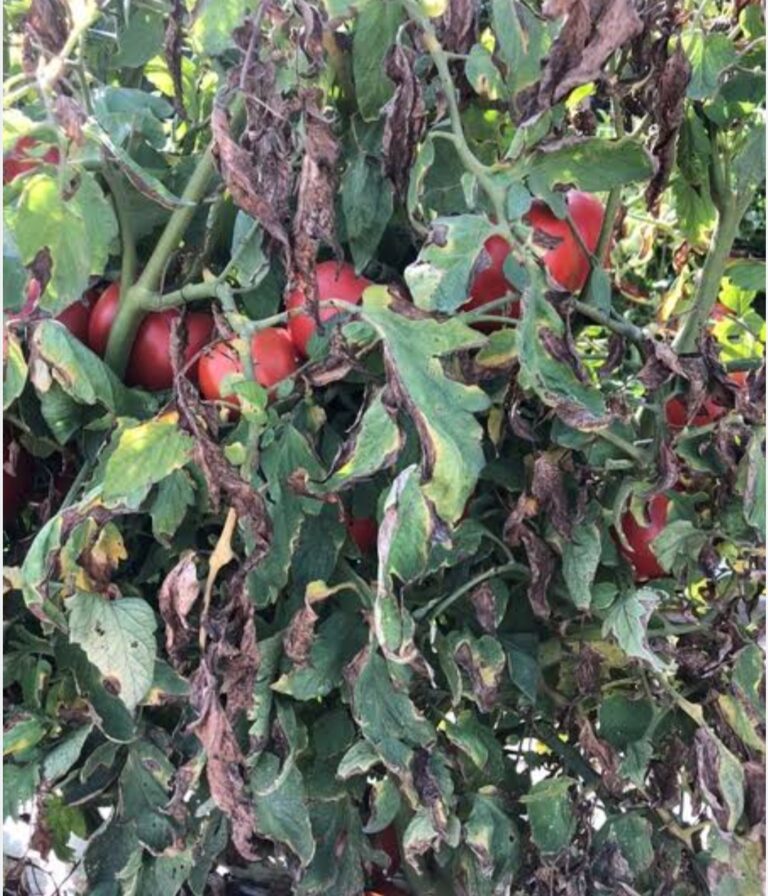Growing Asters: September Flowers in the Garden
Asters are a beautiful flower that bloom in September, making them a great addition to any garden. Did you know that Asters are actually a type of daisy? As an experienced gardener, I can tell you that Asters are a great choice for anyone looking to add some color to their garden. They’re easy to care for, and their vibrant flowers make them a great addition to any garden. So if you’re looking for a new flower to add to your garden, Asters are a great choice. Get ready to grow these beautiful flowers and add some color to your garden!
Table of Contents
Benefits of Growing Asters in September
Asters are a versatile and vibrant addition to any garden, offering a multitude of benefits when planted in the month of September.

Asters add vibrant colors to your garden just as the weather starts to cool down.
These tough flowers can withstand changing conditions and still shine brightly.
Planting asters in September allows them to establish strong roots before winter sets in.
Strong roots mean better growth and more beautiful blooms in the coming seasons.
Bees and butterflies love asters, making them a favorite among pollinators.
By growing asters, you’re promoting biodiversity in your garden.
Asters keep blooming well into fall, providing a stunning display.
You’ll enjoy their beauty for a long time.
Asters are easy to care for, perfect for busy gardeners.
They adapt to various soil types and conditions.
Whether you’re a seasoned gardener or a beginner, asters bring joy to your outdoor space.
So go ahead and plant those asters – they’ll brighten up your garden and your gardening experience! 🌼🌿
Ideal Growing Conditions for Asters
:strip_icc()/blue-asters-07b50f83-aacc26b23b754b41b137705154414b16.jpg)
- Hardiness Zones: Asters thrive in zones 3-8 (USDA).
- Soil: Asters prefer loamy, well-draining soil with a pH ranging from 5.8 to 6.5.
- Light: Asters grow best in full sun for most of the day, but some native species varieties can tolerate partial shade.
- Temperature: Asters are frost-hardy and can withstand near-freezing temperatures temporarily.
- Humidity: Asters have no special humidity preferences and do not require increased humidity levels.
- Fertilizer: Asters are moderate feeders and appreciate being fed with a balanced flower fertilizer twice a month, beginning in spring and continuing until the blooms begin to open.
- Water: Keep new plantings moist and continue watering regularly until the flowers are finished blooming. Asters should have consistently moist soil but never saturated.
- Pruning: Deadhead regularly to keep flowers coming, and cut back to the ground in late autumn.
- Propagation: Asters can be propagated by division or taking softwood cuttings.
By providing these ideal growing conditions, you can ensure that your asters thrive and produce beautiful blooms.
Different Varieties of Asters for September
When it comes to selecting asters for your September garden, there are several varieties that can add vibrant colors and beauty to your outdoor space.Here’s a table summarizing of different varieties of asters suitable for September,
| Variety | Characteristics | Advantages | Disadvantages |
|---|---|---|---|
| Apricot Duchess | – Height: 30 inches. – Fully double, incurved blooms resembling chrysanthemums. | – Stunning addition to any planting scheme. | – None reported. |
| New England Asters | – Stand around 2 feet tall. – Small or large, single or double blooms. – Flower from mid-summer to first frosts. | – Long-lasting blooms. – Ideal for cutting. | – None reported. |
| Winston Churchill | – Bright red blooms. | – Eye-catching color. | – None reported. |
| Patricia Ballard | – Double pink flowers. | – Adds a soft touch to arrangements. | – None reported. |
| Crimson Brocade | – Double red flowers. | – Rich color for bouquets. | – None reported. |
| Bonningale White | – Double white blooms. | – Classic and elegant. | – None reported. |
| White Lady | – Large plant with white flowers and orange centers. | – Striking contrast. | – None reported. |
| Symphyotrichum novae-angliae (New England Aster) | – Height: 3-6 ft. – Flowers in pink, purple, or white. – Blooms in fall. | – Native to North America. – Long-lasting fall display. | – None reported. |
| Symphyotrichum × amethystinum (Amethyst Aster) | – Naturally occurring hybrid of New England aster and white heath aster. – Flowers in shades of purple. | – Unique color combination. | – None reported. |
Feel free to choose the aster varieties that best suit your garden and enjoy their beautiful blooms! 🌼🌸
How to Plant Asters in Your Garden
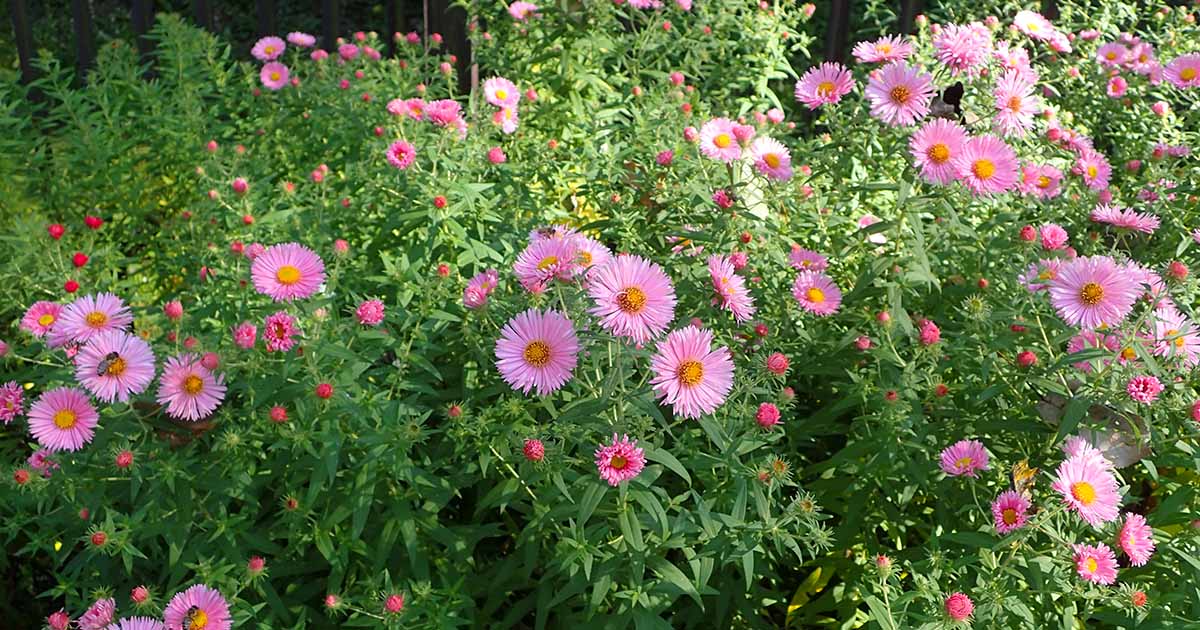
By following these steps, you can successfully plant and grow asters in your garden.
Tips for Watering Asters in September
- Proper Watering Techniques for Asters: During September, it’s crucial to maintain optimal watering practices for healthy asters in your garden.
- Balancing Water Needs: Asters are sensitive to both under-watering and over-watering, emphasizing the importance of finding the right balance for their care.
- Deep, Infrequent Watering: Water asters deeply but infrequently to encourage deep root establishment in the soil, promoting optimal growth and flowering.
- Morning Watering: Aim to water at the base of the plants in the morning to minimize moisture on the leaves, reducing the risk of fungal issues.
- Mulch Application: Implement a layer of mulch around your asters to retain soil moisture, reduce watering frequency, suppress weed growth, and insulate the soil for a healthy root system.
- Monitoring Soil Moisture: Regularly check soil moisture levels by inserting your finger into the soil; if it feels dry about an inch below the surface, it’s time to water again.
- Adapt to Specific Needs: Avoid a fixed watering schedule and instead adjust watering frequency based on the individual needs of your asters and prevailing weather conditions.
Common Pests and Diseases Affecting Asters
The following table explains about the common pests and diseases affecting asters:
| Disease/Pest | Symptoms | Treatment | Effects on Plant |
|---|---|---|---|
| Aster Yellows | – Stunted growth – Yellowing foliage – Distorted flowers | – Remove infected parts promptly – Control leafhoppers (the disease carriers) | – Can weaken the plant |
| Powdery Mildew | – White or gray powdery coating on leaves and stems – Stunted growth – Distorted leaves and flowers | – Apply fungicides – Improve air circulation | – Premature death of the plant |
| Leaf Spot | – Circular or irregular black or brown spots on leaves – Yellowing or browning foliage – Leaf drop | – Remove infected leaves – Maintain good leafhopper control | – Defoliation and weakened plant |
| Rust | – Orange or brown spots on leaves – Stunted growth – Defoliation | – Apply fungicides – Improve plant health | – Weakened plant |
| Spider Mites | – Unhealthy appearance – Fine webbing on leaves | – Keep leaves dry – Maintain good spacing – Apply insecticide if infestation is severe | – Affects plant appearance |
| Lace Bugs | – Unhealthy appearance – Discolored leaves – Lace-like patterns on leaves | – Same as for spider mites | – Affects plant appearance |
| Leaf Miners | – Irregular tunnels or trails on leaves | – Remove affected leaves – Maintain good plant health | – Cosmetic damage |
| Leafhoppers | – Yellowing or browning foliage – Distorted leaves | – Control leafhoppers – Maintain good plant health | – Affects plant appearance |
| Soft Scale | – Sticky residue on leaves – Yellowing or browning foliage | – Remove affected leaves – Apply insecticidal soap | – Affects plant appearance |
| Thrips | – Distorted leaves and flowers – Silvery streaks on leaves | – Remove affected leaves – Apply insecticide if needed | – Affects plant appearance |
| Caterpillars | – Chewed leaves – Defoliation | – Handpick caterpillars – Apply biological controls | – Defoliation and weakened plant |
| Too Much or Too Little Water | – Wilting due to waterlogged or dried-out roots | – Adjust watering frequency – Use well-draining soil | – Affects overall health |
| Tall Varieties Falling Over | – Staking may be needed | – Stake tall varieties | – Prevents falling over under their own weight |
Remember to monitor your aster plants regularly, take preventive measures, and address any issues promptly to keep them healthy and thriving! 🌼🌿
Having used HARRIS Neem Oil for insect control, I must say I’m thoroughly impressed with its quality. This product stands out due to its 100% cold-pressed and unrefined nature, ensuring that it retains all the essential nutrients from the neem seed. Unlike other neem oil products that may undergo processing, HARRIS Neem Oil maintains its integrity, making it a potent solution for insect management.
Its effectiveness in repelling pests like aphids, ants, and other garden invaders is remarkable. Despite its strong natural scent, which some may find unpleasant, the results speak for themselves. I appreciate the purity and potency of this neem oil, making it an essential addition to my gardening toolkit for natural pest control.
✔ Organic Gardening Uses: Utilized in organic gardening to maintain plant health.
✔ Versatile Application: Can be mixed with lotions or shampoos to provide nourishment for hair, nails, and skin.
✔ Effective for Pest Control: While not registered with the EPA as an insecticide, many users find it effective for pest control in gardens.
❌ Limited Use as Insecticide: While effective for some users, the product is not officially registered as an insecticide with the EPA, potentially limiting its use for pest control.
❌ Mixed Customer Reviews: While many customers appreciate its effectiveness, there are mixed opinions on the smell and overall satisfaction with the product.
Pruning Techniques for Healthy Asters
Pruning asters is essential for their health and beautiful blooms. Here are some simple points to remember:

- Why Prune Asters:
- Shape and Growth: Pruning helps shape the plant and encourages new growth.
- Disease Prevention: Proper pruning improves air circulation, reducing the risk of diseases.
- Deadheading: Remove faded flowers to redirect energy towards new blooms.
- Timing:
- Late Spring or Early Summer: Prune asters during this time to encourage branching and prevent flopping.
- Pinch Back Stems: When stems reach about 6 inches, pinch them to promote bushier growth.
- Avoid Heavy Pruning Late in the Season:
- Late pruning can delay flowering and reduce overall blooming.
- Be mindful of timing to enjoy a full display of asters.
Remember, a little pruning goes a long way in keeping your asters healthy and vibrant! 🌼🌿
Fertilizing Asters for Maximum Growth
When it comes to fertilizing asters for maximum growth, it’s crucial to provide the right nutrients at the right time. Asters are known for their vibrant blooms and can thrive when given the proper care.
- Balanced Fertilizer:
- Use a balanced fertilizer with equal parts of nitrogen (N), phosphorus (P), and potassium (K). Look for a formulation like 10-10-10 or similar.
- Balanced nutrients support overall plant health, root development, and flower production.
- Timing:
- Fertilize asters in early spring when new growth begins. This kickstarts their growth for the season.
- Apply a second round of fertilizer in mid-summer to support blooming.
- Organic Matter:
- Incorporate organic matter into the soil. Compost and well-rotted manure enrich the soil and provide slow-release nutrients.
- Organic matter improves soil structure and enhances nutrient availability.
- Dosage:
- Follow the recommended dosage instructions on the fertilizer packaging. Avoid over-fertilizing, as it can harm the plants.
- Adjust based on your specific soil conditions and the needs of your asters.
- Watering:
- Water the plants well after fertilizing. This helps nutrients reach the root zone.
- Maintain consistent moisture throughout the growing season.
- Observation:
- Monitor your asters for signs of nutrient deficiencies (e.g., yellowing leaves, poor growth).
- Adjust fertilization based on plant response.
Remember, a well-fed aster will reward you with abundant and colorful blooms. Happy gardening! 🌼🌿
| Aspect | Recommendation |
|---|---|
| Fertilizer Type | Use a well-balanced fertilizer such as 15-16-17 or a granular fertilizer like 5-10-5 or 10-10-10. |
| Fertilizer Application | Apply the fertilizer around the base of the plant according to the manufacturer’s directions and water in well. |
| Frequency | Fertilize twice a month beginning in spring and stop when flower buds appear. |
| Best Time | Fertilize in cooler weather and preferably before rainfall. |
| Avoidance | Avoid fertilizing on days when temperatures may exceed 80 degrees to prevent root and leaf damage. |
By following these guidelines and providing the necessary nutrients through proper fertilization, you can promote maximum growth and vibrant blooms in your asters.
Companion Plants for Asters in September
Companion plants play a crucial role in creating a harmonious and thriving garden ecosystem.
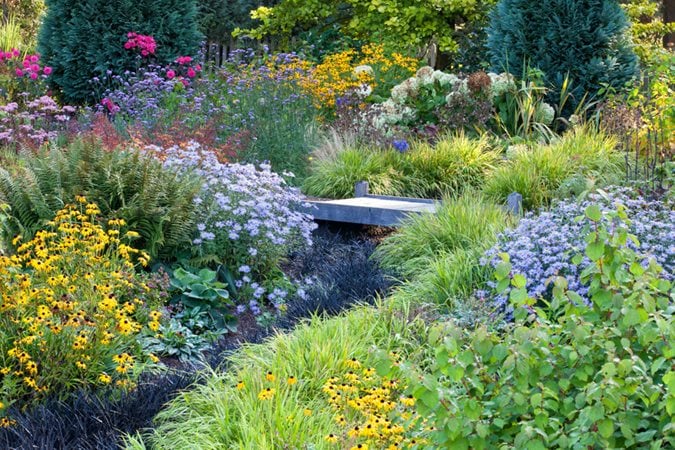
- Sedum spectabile (Stonecrop):
- Sedum spectabile, commonly known as stonecrop, features succulent leaves and clusters of star-shaped flowers.
- Blooms in late summer and early fall, complementing Asters.
- Attracts pollinators and provides visual interest.
- Echinacea purpurea (Purple Coneflower):
- Echinacea purpurea boasts vibrant purple-pink flowers with a prominent cone-shaped center.
- Blooms from mid-summer to fall, overlapping with Asters.
- Attracts bees, butterflies, and other beneficial insects.
- Rudbeckia fulgida (Black-Eyed Susan):
- Rudbeckia fulgida features bright yellow or orange daisy-like flowers with dark centers.
- Blooms in late summer and early fall, harmonizing with Asters.
- Attracts pollinators and adds cheerful color to the garden.
- Agastache (Hyssop):
- Agastache varieties, such as Agastache foeniculum (anise hyssop), offer aromatic foliage and spikes of tubular flowers.
- Blooms throughout summer and into fall, providing continuous nectar for pollinators.
- Attracts bees, hummingbirds, and butterflies.
- Salvia (Sage):
- Salvia species, like Salvia nemorosa (meadow sage), produce spikes of colorful flowers.
- Blooms from summer to fall, complementing Asters.
- Attracts pollinators and adds vertical interest.
- Nepeta (Catmint):
- Nepeta cultivars, such as Nepeta × faassenii, have gray-green foliage and lavender-blue flowers.
- Blooms from late spring to fall, creating a long-lasting display.
- Attracts bees and provides a soft, billowy texture.
Remember to choose plants with similar growing conditions, stagger bloom times, and create a harmonious garden that benefits both aesthetics and ecosystem health. 🌼🌿
Creative Ways to Use Asters in Floral Arrangements
Asters are indeed versatile and delightful flowers that can enhance any floral arrangement. Here are some points to consider when working with asters:
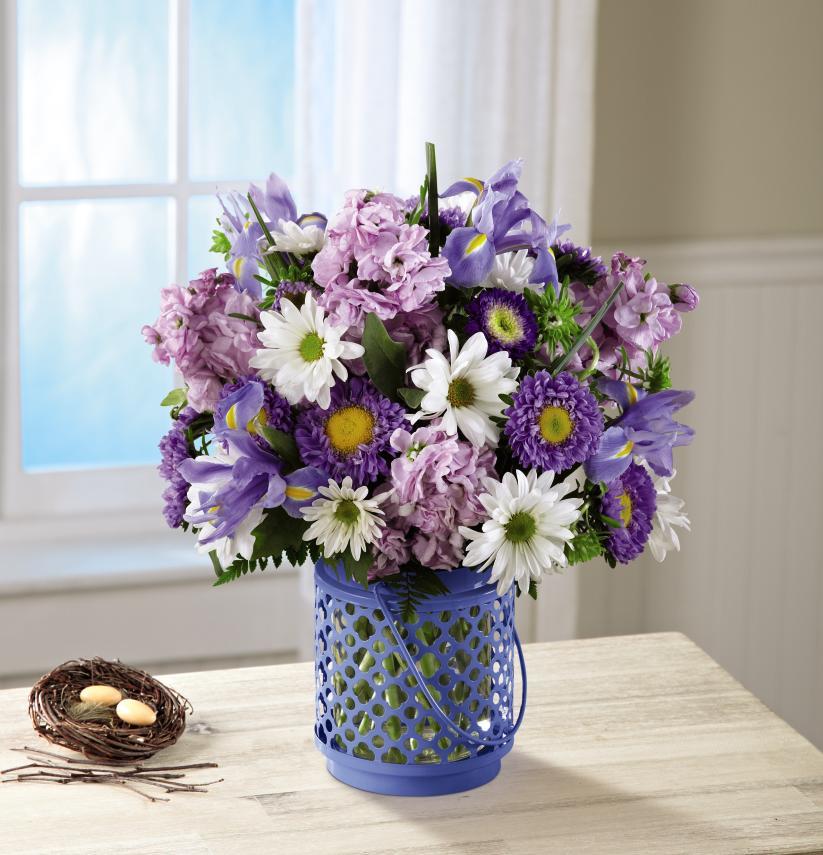
- Colorful Blooms:
- Asters come in various shades, from purple and pink to white and blue.
- Their daisy-like appearance adds charm to bouquets and centerpieces.
- Pairing with Other Flowers:
- Combine asters with complementary blooms like roses or dahlias.
- The mix of textures and colors creates an appealing display.
- Sturdy Stems:
- Asters have strong stems, making them suitable for mixed arrangements or standalone bouquets.
- They hold up well in different floral designs.
- Dried Floral Decor:
- Preserve asters by drying them for long-lasting home decorations.
- Add a touch of nature to your living space year-round.
- Unconventional Uses:
- Think beyond traditional bouquets.
- Incorporate asters into wreaths, garlands, or floating floral installations.
- Mix with Greenery:
- Pair asters with eucalyptus or ferns for a natural and textured look.
- Experiment with placement and combinations to showcase their beauty.
Whether in classic bouquets or unconventional arrangements, asters bring joy and vibrancy to any setting! 🌼🌸
Harvesting Asters for Indoor Displays
Bringing the beauty of your garden indoors is a delightful way to enjoy your asters. Here’s how to do it effectively:

- Choose the Right Time:
- Harvest asters when they have fully opened but are not yet past their prime.
- Morning is ideal, as the blooms are well-hydrated and at their freshest.
- Harvest Technique:
- Cut stems at an angle using sharp, clean scissors or pruning shears.
- Remove any lower leaves that will be submerged in water to prevent bacterial growth.
- Vase Preparation:
- Fill a clean vase with fresh water.
- Add floral preservative if available (follow package instructions).
- Arranging Asters:
- Arrange the asters in the vase, considering their height and color.
- Mix them with other flowers or greenery for a balanced display.
- Indoor Care:
- Place the vase in a cool spot away from direct sunlight.
- Change the water every 2-3 days to keep it fresh.
- Trim the stems slightly each time you change the water.
- Enjoy the Beauty:
- Asters can last 7-10 days indoors if properly cared for.
- Their vibrant colors and daisy-like blooms will brighten up your home.
Now you can savor the beauty of your garden inside! 🌼🏡
Having purchased the Glass Bud Vases for Flowers by Hewory in the Mini Blue Bulk Flower Vase set, I must say I’m quite pleased with my purchase. These vases not only add a touch of elegance to my home decor but also serve as beautiful centerpieces for various occasions. What I particularly appreciate about these vases is their quality craftsmanship. Made of durable glass with high transparency, they exude a sense of sophistication while being sturdy enough to hold flowers securely.
The stylish design of the vases complements any space, whether it’s the living room, bedroom, or office desk. Additionally, the packaging was sturdy and ensured that the vases arrived in perfect condition. Overall, I highly recommend these glass bud vases for anyone looking to enhance their home decor with a touch of simplicity and elegance.
- Elegant Design: The glass bud vases have a simple yet elegant design that adds charm to any space.
- Versatile Use: Suitable for various occasions such as weddings, parties, home decor, and floral arrangements.
- High Transparency: Made of durable glass with high transparency, allowing for a clear view of the flowers inside.
- Multiple Pieces: The set includes three small vases, offering flexibility in arranging flowers or decorating different areas.
- Lightweight: The vases are lightweight, making them easy to move around and handle.
- Affordable: Reasonably priced, providing good value for the quality and aesthetic appeal.
- Fragility: Some users have reported concerns about durability, suggesting that the vases may be fragile and prone to breakage if mishandled.
- Flowers Not Included: The package does not include flowers, which means additional purchases are required to complete the floral arrangements.
- Limited Color Options: The vases are only available in pink, limiting color choices for those with specific preferences or decor schemes.
- Mixed Opinions on Durability: While some customers find the vases to be of good quality, others have expressed doubts about their durability over time.
Propagation Methods for Asters
Propagation methods for asters are essential for expanding your garden’s beauty and diversity.
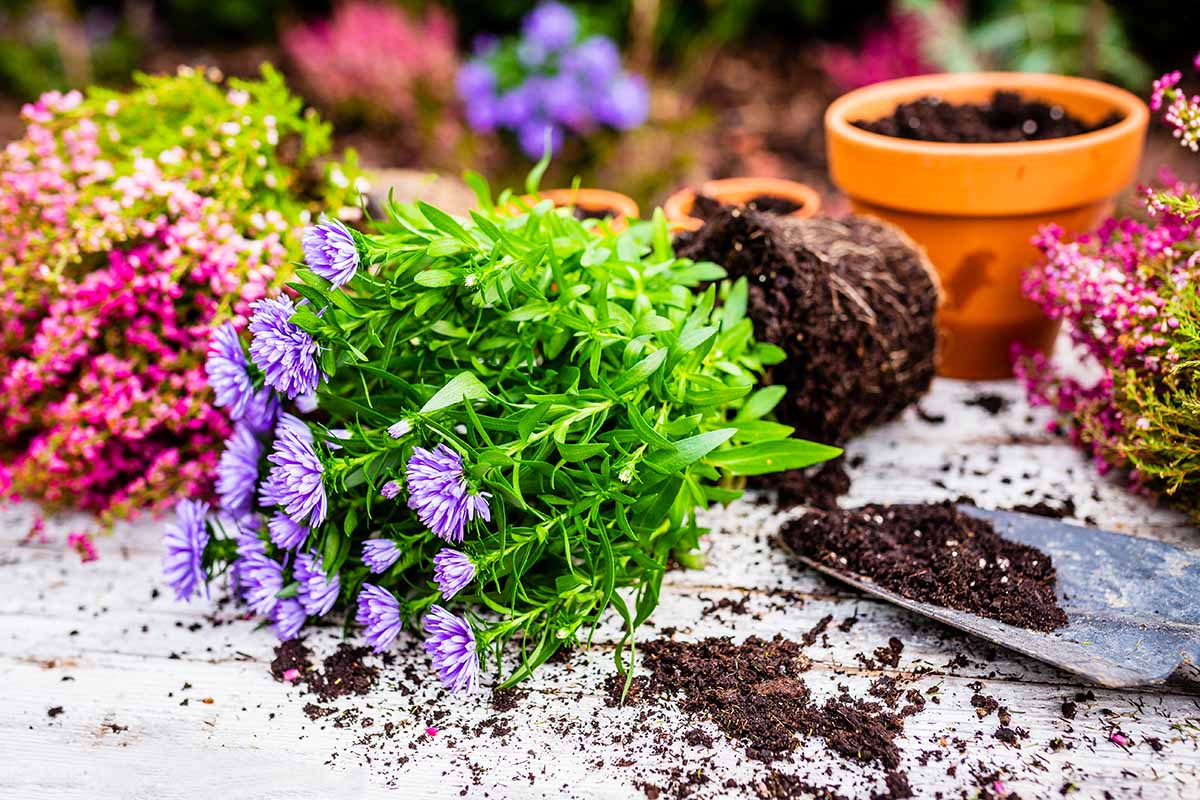
- Division:
- Separate mature asters into smaller clumps.
- Replant these divisions in other areas of your garden.
- Benefits: Controls plant size, promotes healthy growth, and rejuvenates older plants.
- Stem Cuttings:
- Take a cutting from a healthy aster plant (usually a non-flowering stem).
- Root the cutting in a suitable growing medium (such as perlite or vermiculite).
- Benefits: Creates genetically identical new plants, ensuring bloom color consistency.
Remember to provide proper care to the propagated asters, including adequate water, light, and nutrients, to help them thrive and contribute to the vibrancy of your garden! 🌼🌿
Overwintering Asters for Next Year
To ensure a successful bloom of asters in the upcoming year, proper overwintering techniques are essential.
- As the temperatures drop and frost sets in, asters require adequate protection to survive the harsh winter conditions.
- When preparing your asters for the winter months, consider applying a layer of mulch around the base of the plants to insulate the roots and help retain moisture.
- Additionally, trimming back the foliage of the asters can prevent disease buildup and promote healthier growth in the following season.
- By taking proactive measures to overwinter your asters, you can set the stage for a vibrant display of blooms when spring arrives.
Troubleshooting Common Issues with Asters
When cultivating asters in your garden, it is crucial to be proactive in addressing any issues that may arise to ensure the health and vitality of these beautiful flowering plants.
- Powdery Mildew:
- Symptoms: White or gray powdery coating on leaves and stems, stunted growth, distorted leaves and flowers.
- Treatment: Apply fungicides, improve air circulation, and avoid overhead watering.
- Effects on Plant: Premature death if left untreated.
- Aster Yellows:
- Symptoms: Stunted growth, yellowing foliage, distorted flowers.
- Treatment: Remove infected parts promptly, control leafhoppers (the disease carriers).
- Effects on Plant: Weakens the plant.
- Root Rot:
- Symptoms: Wilting, yellowing, and decay of roots.
- Treatment: Ensure well-draining soil, avoid overwatering, and use disease-resistant varieties.
- Effects on Plant: Can lead to plant death.
- Regular Inspection:
- Regularly inspect your asters for signs of stress or damage.
- Look for wilting leaves, discoloration, or stunted growth.
- Optimal Growing Conditions:
- Adjust sunlight, water, and nutrient levels based on specific aster needs.
- Maintain consistent care to prevent issues.
Remember, proactive care and timely adjustments can keep your asters healthy and blooming beautifully! 🌼🌿
Celebrating the Beauty of Asters in September
Asters are one of the stars of the September garden, showcasing a stunning display of colors and shapes that add a touch of elegance to any outdoor space.

- Common Name: Asters, Michaelmas Daisies, September flower, frost flower
- The name “Aster” originates from the Greek word for star, which perfectly describes their star-like blooms.
- Other names include Michaelmas daisy and frost flower.
- Asters hail from various regions in eastern Europe and Asia, with some species native to North America.
- They bloom in a range of vibrant shades, including blue, purple, white, red, and pink.
- Their bright yellow centers, composed of many tiny flowerets, make them easily recognizable.
- Asters are popular in the floral industry due to their versatility and long vase life after being cut.
- Types of Asters:
- New York Asters: These come in various varieties, differing in height and flower appearance.
- New England Asters: Known for their late-season blooms, they add color to the garden even as other flowers fade away.
- Asters are also called Michaelmas daisies because they bloom in September, coinciding with the celebration of the archangel Michael in early Christian tradition.
- Growing Asters:
- Light and Temperature:
- Asters thrive in full to partial sun.
- In hot summer areas, grow them in partial shade with morning sun and afternoon shade.
- Cooler summers are ideal for asters, but there are cultivars that can withstand heat.
- Soil: Well-draining, loamy soil is best.
- Water: Provide about 1 inch of water per week.
- Pests and Diseases: Watch out for lace bugs, aphids, scale, spider mites, thrips, powdery mildew, aster yellows, botrytis, and root rot.
- Light and Temperature:
- Attracting Pollinators:
- Asters are excellent for pollinator gardens, attracting bees, butterflies, and other beneficial insects.
- Their late-season blooms provide essential food sources when other flowers wane.
- Deer and rabbits tend to avoid browsing on asters.
- Cut Flowers:
- Asters are a top choice for floral arrangements due to their longevity once cut.
- They can last over a week in a vase.
- Their cheerful appearance brightens up any indoor space.
In summary, whether in your garden or as part of a bouquet, asters bring elegance, color, and pollinator-friendly beauty to the September landscape. 🌼🌟
Creating a Sustainable Aster Garden
Cultivating a sustainable aster garden involves thoughtful practices that benefit both the environment and your gardening experience. Here are some key points to consider:

- Organic Practices:
- Organic Fertilizers: Opt for natural fertilizers like compost, well-rotted manure, or organic plant-based fertilizers. These enrich the soil without harmful chemicals.
- Natural Pest Control: Instead of synthetic pesticides, explore companion planting. For instance:
- Marigolds: Plant marigolds near asters to deter aphids and nematodes.
- Chrysanthemums: These contain pyrethrins, which repel various pests.
- Beneficial Insects: Introduce ladybugs, lacewings, and parasitic wasps to control pests naturally.
- Water Efficiency:
- Drip Irrigation: Use drip systems to deliver water directly to the root zone, minimizing wastage.
- Mulching: Apply organic mulch (such as straw or wood chips) around asters. It conserves moisture, suppresses weeds, and regulates soil temperature.
- Biodiversity and Ecosystem Health:
- Native Plants: Include native plants alongside asters. They support local wildlife and enhance biodiversity.
- Pollinator-Friendly Plants: Asters attract bees, butterflies, and other pollinators. Consider adding other nectar-rich flowers like coneflowers, bee balm, and goldenrod.
- Companion Plants: Pair asters with compatible plants. For example:
- Goldenrod and Asters: These complement each other and attract diverse pollinators.
- Lavender: Repels pests and adds fragrance to the garden.
- Soil Health:
- Cover Crops: Plant cover crops (such as clover or vetch) during fallow periods. They enrich the soil, prevent erosion, and fix nitrogen.
- Crop Rotation: Rotate aster planting locations annually to prevent soil depletion.
- Wildlife Considerations:
- Bird-Friendly Features: Install bird feeders, nesting boxes, and bird baths. Birds help control insect populations.
- Avoid Harmful Chemicals: Refrain from using chemicals harmful to wildlife.
Remember, sustainable gardening not only benefits the environment but also connects you to the natural world. Enjoy the process and watch your aster garden thrive! 🌼🌿
Watch video for more information:
FAQ
Can I grow Asters in pots or containers?
Yes, Asters can be grown in pots or containers as long as they have enough space to spread their roots. Make sure to use well-draining soil and water regularly.
How often should I fertilize my Asters?
It is recommended to fertilize your Asters once a month during the growing season with a balanced fertilizer to promote healthy growth and abundant blooms.
Are Asters prone to any specific diseases?
Asters are susceptible to powdery mildew, aster yellows, and rust. To prevent diseases, make sure to plant Asters in well-draining soil, provide good air circulation, and avoid overhead watering.
Can I divide my Aster plants to propagate them?
Yes, Asters can be divided in the spring or fall to propagate new plants. Simply dig up the plant, separate the clumps, and replant them in a suitable location.
How can I encourage more blooms on my Asters?
To encourage more blooms on your Asters, deadhead faded flowers regularly, provide adequate sunlight, and ensure proper watering and fertilization throughout the growing season.

Studied Agricultural Engineering-Plant Protection at University of California, Davis.
Head of Content writing team at Southelmontehydroponics.com

